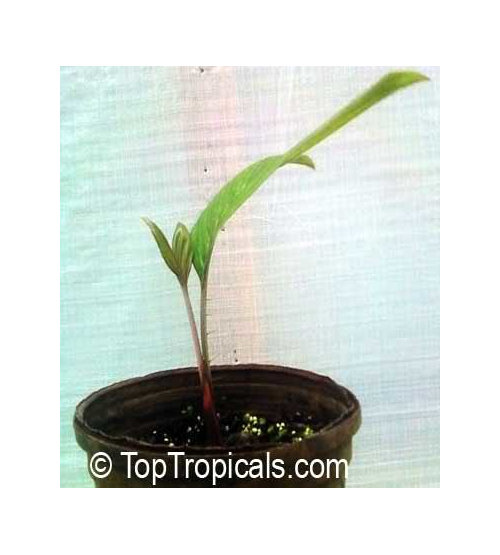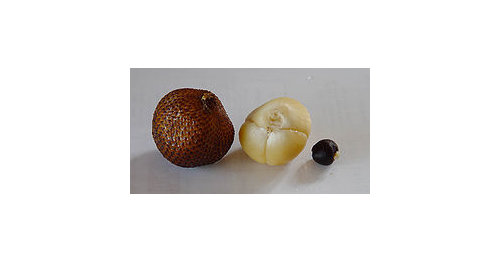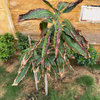Salacca magnifica, Salak
anyone growing it or try the fruit and have an analysis? as much as i hate TT im tempted to get a Salacca variety "pondoh"

$40 is kinda steep but its definitely rare to find a known named variety
i would REALLY like to find and propagate Salak Gula Pasir
from:
http://en.wikipedia.org/wiki/Salak

Salak (Salacca zalacca) is a species of palm tree (family Arecaceae) native to Indonesia. It is a very short-stemmed palm, with leaves up to 6m long; each leaf has a 2m long petiole with spines up to 15 cm long, and numerous leaflets.
The fruit grow in clusters at the base of the palm, and are also known as snake fruit due to the reddish-brown scaly skin. They are about the size and shape of a ripe fig, with a distinct tip. The pulp is edible. The fruit can be peeled by pinching the tip which should cause the skin to slough off so it can be pulled away. The fruit inside consists of three lobes, each containing a large inedible seed. The lobes resemble, and have the consistency of, large peeled garlic cloves. The taste is usually sweet and acidic, but its apple-like texture can vary from very dry and crumbly (salak pondoh from Yogyakarta) to moist and crunchy (salak Bali).
Cultivation
Salak fruit has been cultivated throughout Indonesia and there are at least 30 cultivars, but most of which have an astringent taste and are sweet, indigenous to Indonesia. Two popular cultivars are salak pondoh from Yogyakarta province (found in 1980s) and salak Bali from Bali island.
[edit] Salak pondoh
Salak pondoh is an important fruit in Yogyakarta province. In the five years to 1999, the annual production of salak pondoh in Yogyakarta doubled to 28,666 tons. The popularity of salak pondoh (compared with other cultivars) among local Indonesian consumers is mainly due to the intensity of its aroma, which can be overripe and sweaty even before full maturation.
Salak pondoh has three more superior variations, namely pondoh super, pondoh hitam (black pondoh), and pondoh gading (ivory-English term for gading / yellowish-skinned pondoh).
[edit] Salak Bali
Salak Bali is commonly sold all over the island of Bali, and is a popular fruit with both locals and tourists. It is also a favourite fruit of the monkeys found in the famous "Monkey Forests", with the animals often stealing fruit from visitors, especially children whom they see as an easier target. The fruit is roughly the size of a large fig, and has a crunchy and moist consistency. The fruit has a starchy 'mouth feel', and a flavour reminiscent of dilute pineapple and lemon juice.
[edit] Salak Gula Pasir
The most expensive cultivar of the Bali salak is the 'gula pasir'(literally meaning fine-grained sugar), which is smaller than the normal salak and is the sweetest of all salak. The price in Bali is 15,000rp-30,000rp+(about 1.5 to 3 USD) per kilogram (dependent on time of year when more trees are fruiting), against about 12,000rp for regular salak.







boson
red_sea_me
Related Professionals
Simpsonville Landscape Architects & Landscape Designers · Havre de Grace Landscape Architects & Landscape Designers · Southfield Landscape Architects & Landscape Designers · San Juan Landscape Architects & Landscape Designers · Milford Landscape Contractors · Coram Landscape Contractors · Eagle Landscape Contractors · Live Oak Landscape Contractors · Marlborough Landscape Contractors · Mendota Heights Landscape Contractors · North Plainfield Landscape Contractors · Riverview Landscape Contractors · Rosemount Landscape Contractors · Royal Oak Landscape Contractors · Quartz Hill Landscape Contractorsohiojay
murahilin
jsvand5
mango_kushOriginal Author
ohiojay
red_sea_me
hmhausman
mango_kushOriginal Author
jsvand5
mango_kushOriginal Author
murahilin
jsvand5